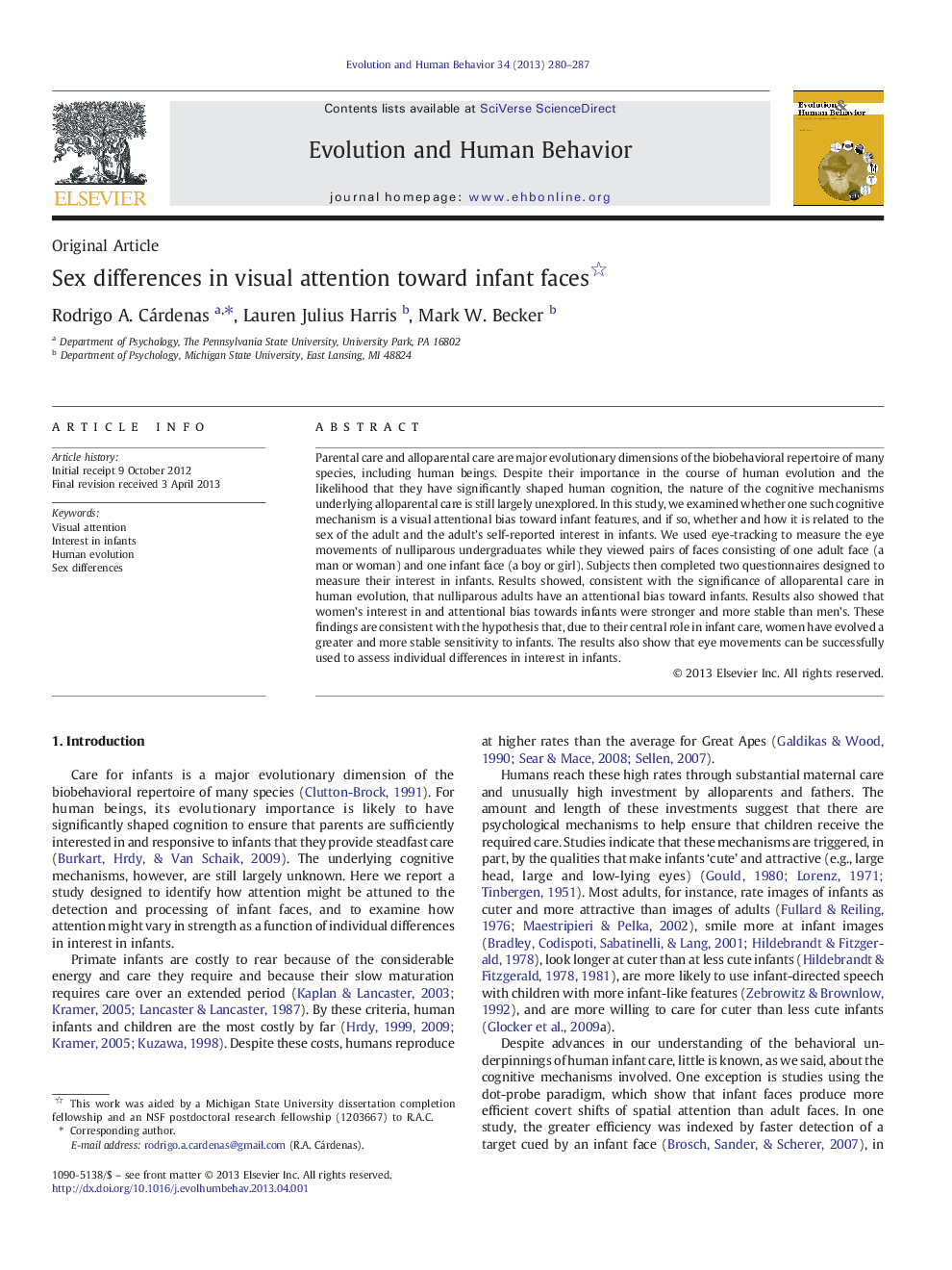ترجمه فارسی عنوان مقاله
تفاوتهای جنسی در توجه بصری نسبت به چهره نوزاد
عنوان انگلیسی
Sex differences in visual attention toward infant faces ☆
| کد مقاله | سال انتشار | تعداد صفحات مقاله انگلیسی |
|---|---|---|
| 72130 | 2013 | 8 صفحه PDF |
منبع

Publisher : Elsevier - Science Direct (الزویر - ساینس دایرکت)
Journal : Evolution and Human Behavior, Volume 34, Issue 4, July 2013, Pages 280–287
ترجمه کلمات کلیدی
توجه بصری؛ علاقه در نوزادان؛ تکامل انسان؛ تفاوت جنسی
کلمات کلیدی انگلیسی
Visual attention; Interest in infants; Human evolution; Sex differences

